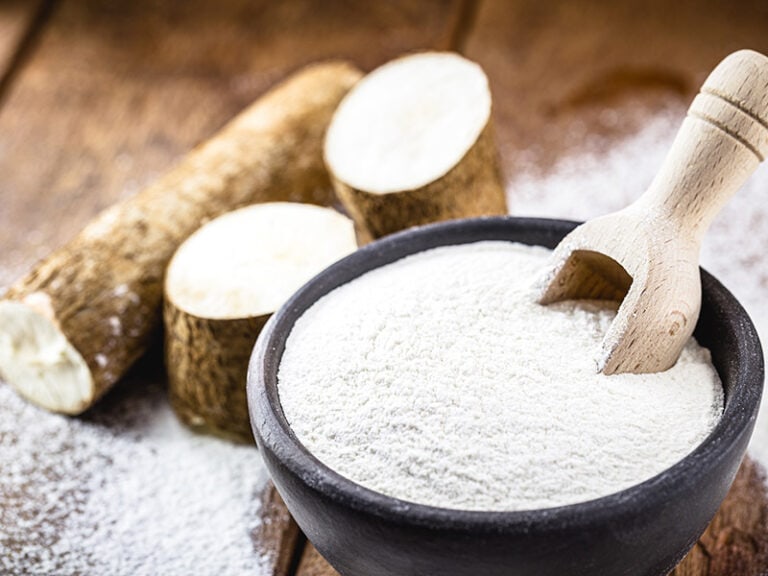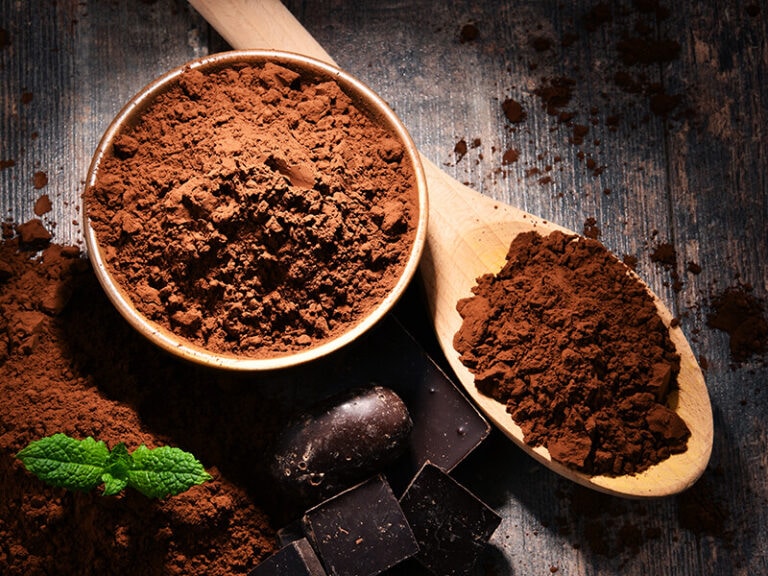What size stock pot do I need? Do I even need one? Sometimes, you are unsure whether a stock pot is necessary for your kitchen. A stock pot doesn’t bring you more problems; it’s there to solve your cooking issues.
Whether making chicken congee soup, steaming corn, making family-sized chicken noodles, or making huge batches of sauces for long-time storage, a stock pot is the only cookware that can get your job done.
However, most people lack knowledge when choosing a stock pot. They are unsure about the size, the material, or the design of stock pots. In this article, I will tell you everything you need to know to choose the right stock pot for your kitchen.
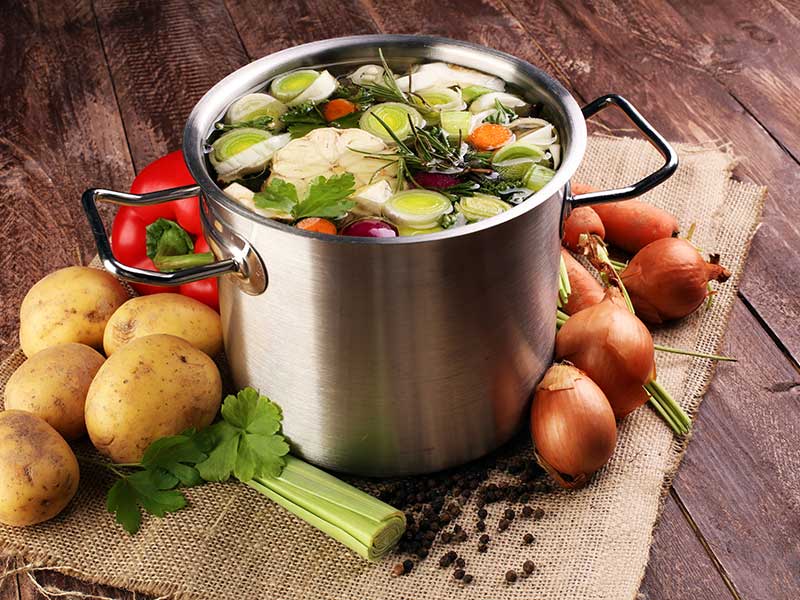
The Story Of Stock Pots
A stock pot is one of the most popular cooking pots used worldwide. It is a big pot with a flat bottom, high wall, wide cooking diameter, two handles on both sides, and a lid with a top handle. (1)
The name stock pot means a pot to make stock, simmering water for long hours, and continuously adding more ingredients like meat, bone, and vegetable to produce a soup base. A stock pot with a good design allows less liquid to evaporate.
A stock pot is the keynote of any kitchen. It’s durable and contains the most volume out of any cookware in your kitchen. It has good versatility, so people use them for many cooking purposes, such as making soup, stew, boiling pasta, and other dishes with great volume.
The most common stock pot material is aluminum, stainless steel, or enamel. High-quality stock pots come with multi-layered bottoms and sides made of different metals to conduct heat better.
Stainless steel is one of the highest quality and most expensive materials for stock pots. It doesn’t rust or react with other substances, so your food is safe. Stainless steel is durable and cost-effective too.
Uncover the way to choose the best stock pot for you and your kitchen.
Stock Pots: What Are Your Options?
Buying a stock pot that satisfies all your requirements is tricky. You have to look for numerous qualities in a suitable stock pot. Size is the first idea you should form in your mind about the stock pot of your choice.
The desired size depends on the purpose of your stock pot. Is it for family usage, or you’re cooking for the whole village?
After making up your mind about the size, material, design, heat conduction, durability and price are the next factors of your concerns.
You always need to learn, even for choosing the right stock pot.
Size
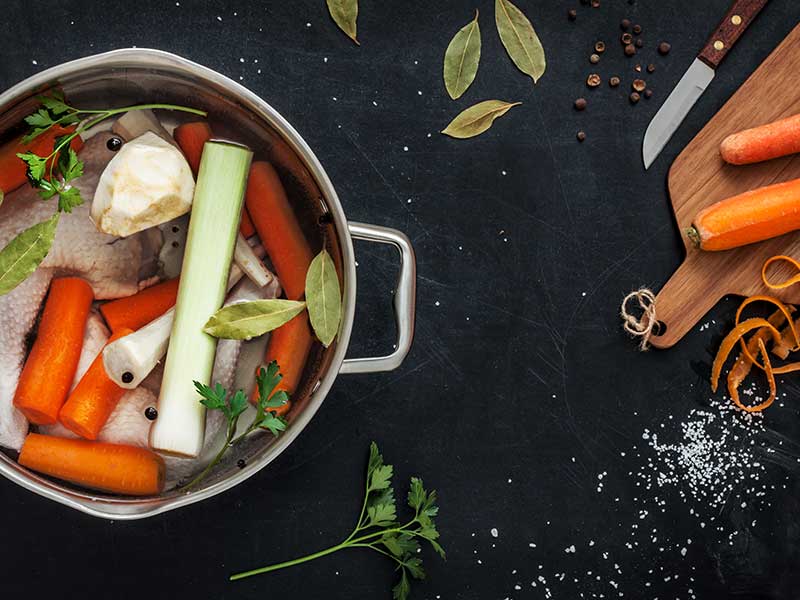
Size does matter! A correct stock pot size saves you much cooking time and money. In addition, it also improves the taste of your foods.
People measure stock pots by the amount of liquid a stock pot can hold, measured in quarts.
There are many sizes to choose from, but they boil down to 4 basic sizes for household usage: 6-quart, 8-quart, 12-quart, and 16-quart. Stock pots in commercial or factory kitchens can go beyond 20-quart.
Here is a brief table for your comparison:
Typically, 6 – 16 quarts stock pots are for household usage. They can hold up to 3.78 -13.24 liters. These stock pots are suitable for cooking large batches of foods such as soups, pasta, stews, curry, steamed foods, stocks, and broth.
A 6-quart pot can serve up to 6-7 people, while a 7-10-quart pot can serve more than 8 people at a time.
Bigger stock pots, ranging from 16-40-quart, are exclusive to commercial use and beer brewing. Obviously, the bigger the stock pot, the more you can cook. The smaller the stock pots, the less you can make.
If you can only afford a single stock pot covering all household cooking purposes, a stock pot between 8-12 quarts (7.5 – 11 liter) is the one for you. With these kinds, you won’t waste too much time cooking small servings of food and can get big batches done too.
Design
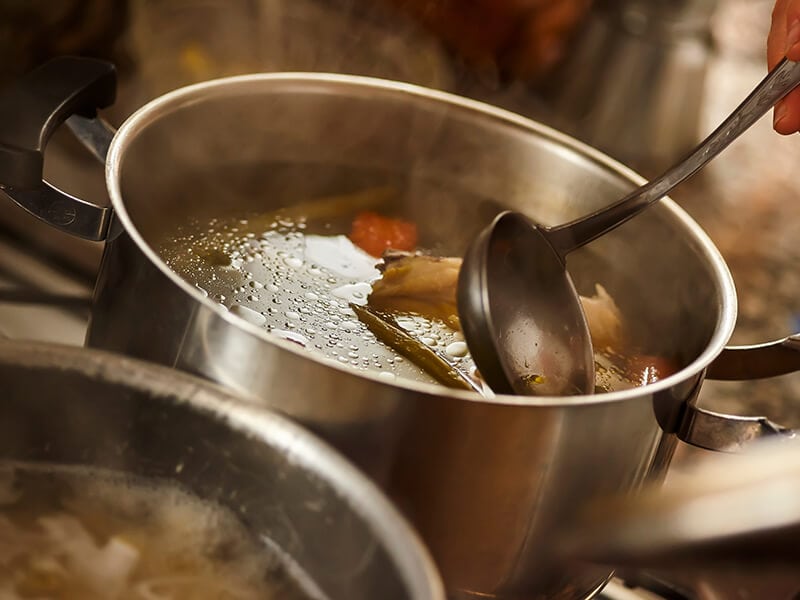
Not all stock pots of the same size have the same design. For example, with the same size, a stock pot can be taller but smaller in diameter than the other, and vice versa. Stock pot’s design varies greatly depending on brands and collections.
On average, a stock pot’s diameter ranges from 10 to 14 inches (26-34 centimeters) at the base and top. Some pots come with bigger diameters, but they are not common in the market.
The stock pot’s design affects the storage space and consumer experience. A better handle design can reduce the risk of users dropping the pot. A well-made lid design can better prevent the heat from escaping the stock pot, thus accelerating your cooking time.
Material
Material is the second important factor to consider when buying stock pots. As we have mentioned above, the available materials for stock pots, let’s get into detail about what kinds of material you are looking for:
Stainless Steel Stock Pots
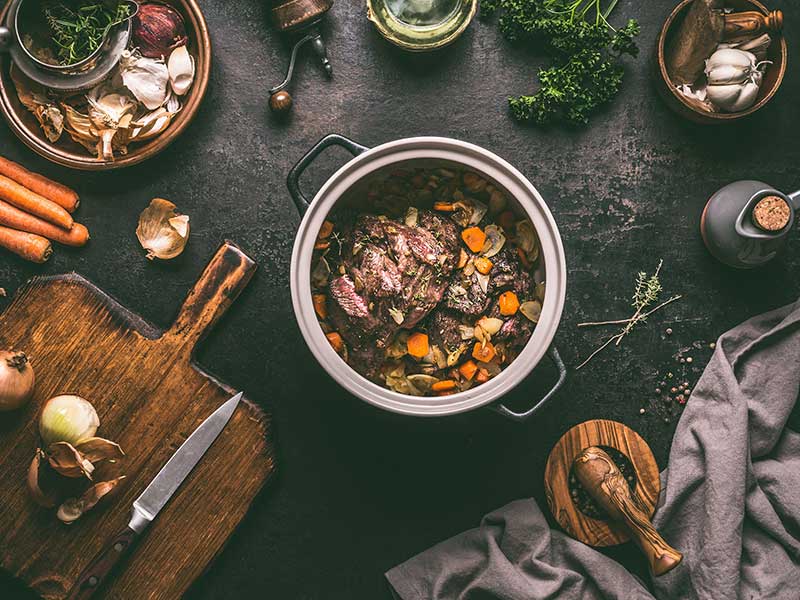
Food-grade stainless steel is a durable material that is a part of many cookwares. Due to its easy-to-clean nature, durability, and corrosion resistance, stainless steel appears in domestic and professional contexts.
Stainless steel is also lightweight. This is surprisingly a big plus since most household cooks are women. A filled pot with a big batch of food can be hefty.
Stainless steel is also non-stick without the need for a non-stick coating. You don’t have to worry about the burnt marks on the bottom with stainless steel.
The heat conduction of stainless steel is great. It will distribute the heat evenly throughout the base and the foods inside. Despite its quality, the price of stock pots made of this material is quite affordable.
Aluminum Stock Pots
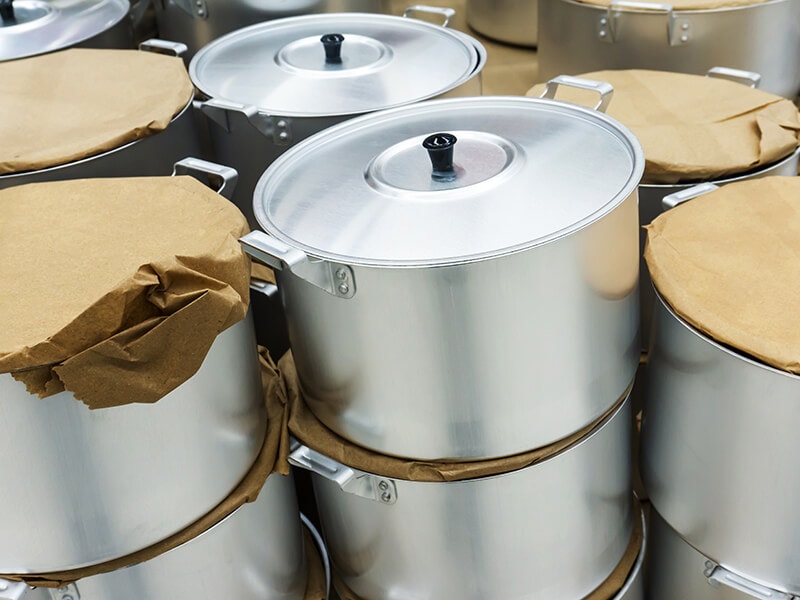
Aluminum is a lightweight and soft material. It is generally durable, but its nature makes it susceptible to scratches and staining.
Aluminum is a great heat conductor, which enables it to distribute heat evenly in a shorter time. This is super effective in commercial cooking scenarios.
However, the downside of aluminum is that it is a reactive metal, which can alter the flavor of certain foods, especially foods with acidic nature, such as lime and citrus. It can also cause discoloration in foods and give them a metallic taste. (2)
Lower-quality aluminum may also carry excessive harmful substances that can badly affect your health.
Heat Conduction
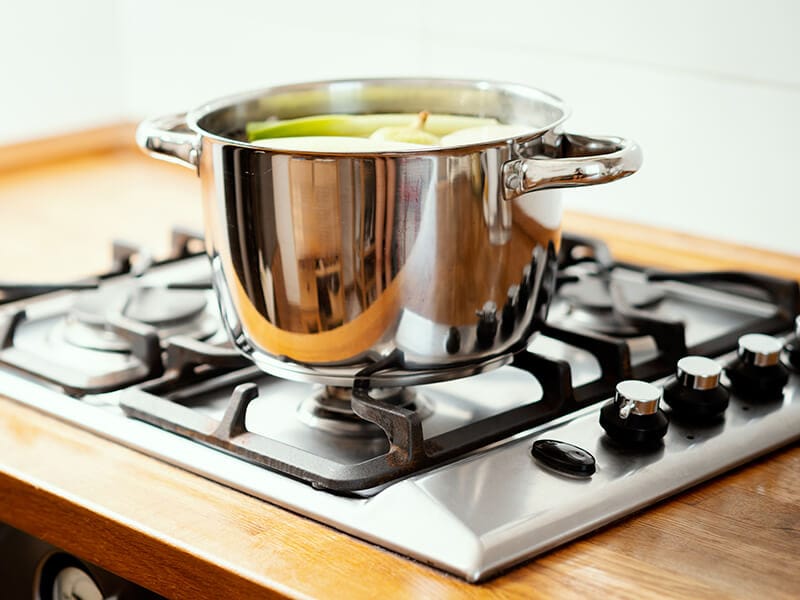
It’s basic physics that smaller stock pots will heat up quickly and more evenly than bigger pots since the heat doesn’t have to reach a large surface.
The material and design of your pot dictate how the heat circulates too. Most stock pots nowadays are designed with stainless steel with an aluminum part bonded to the base. This design is called an impact-bonded base.
Since aluminum is an excellent heat conductor, the base with that material will heat up faster and evenly.
Durability
Both of the mentioned materials are durable in terms of longevity. Still, stainless steel can retain its original structure better, while aluminum is prone to scratches and dents, affecting heat conduction in the long run.
There are also other materials like cast iron and ceramics. Cast iron is even more durable and conducts heat better than stainless steel, but it’s expensive.
On the other hand, ceramics are hard, heavy, and durable, but they are prone to breakage or chips upon physical contact. Ceramic pots are excellent at retaining heat after cooking. Asian love using this material for that reason.
Learn more about stock pot to perfect your cooking skills.
Price
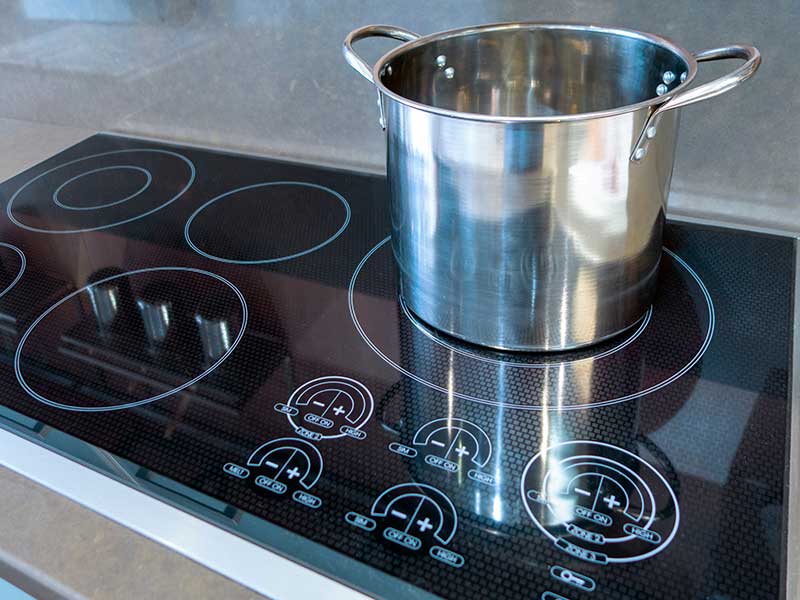
Every good thing comes with a price. Kitchenwares are among the most worthy investment wares in your house since they directly affect the foods you consume daily.
Cheap kitchen wares may be the most costly in replacement and threaten your health by containing harmful substances.
Aluminum is the most economical material in the market, but it also comes with certain downsides. Stainless steel is among the most cost-effective materials when it comes to cookware. It’s more expensive than aluminum, but its benefits outweigh that cost difference.
Ceramics and cast iron belong to premium kinds of material. They are more effective in cooking specific foods. The choice of brands also affects the price. There are more luxurious brands and more affordable ones.
Things To Consider When Choosing Stock Pot Size
The amount of food you cook in the stock pot should not be the only factor that dictates your choice of size. There are things you should be mindful of when choosing the size of a stock pot.
Storage Space
Not everyone has a king-sized kitchen. If you want to be efficient with your space, the size of your cookware must be your number one concern. As a stock pot can take up quite a lot of space, you should know about your storage space.
Always measure the height and depth of your storage space before bringing home a stock pot. Don’t buy a pot so tall that you can’t put it in the fridge or store it in your cabinet. It would be awkward if you bring a huge stock pot home and don’t know where to put it.
Stove Size
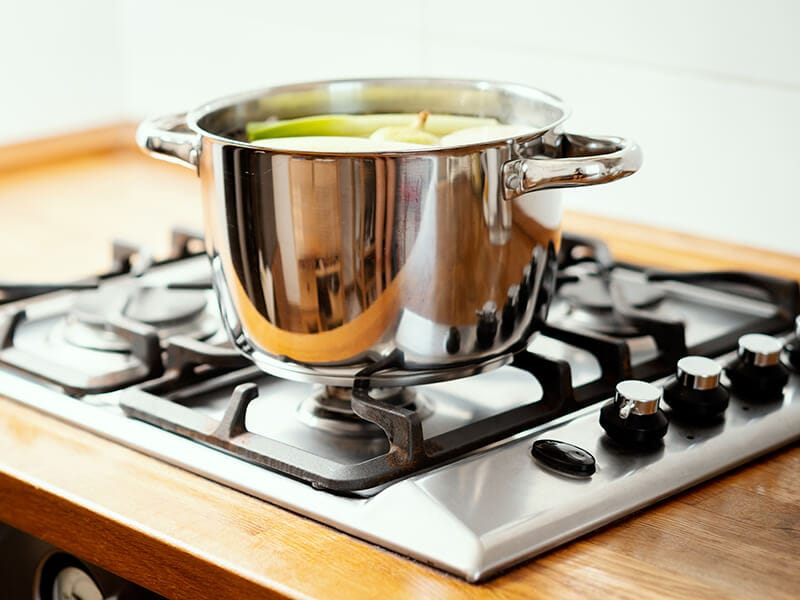
You can’t cook a huge stock pot on a tiny stove; that is dangerous and ineffective at the same time. A big stock pot can’t be well-balanced on a small stovetop, and the heat only concentrates in the middle of the pot also.
A newly bought stock pot should always fit your setup. Some kinds of space-saving stoves are very narrow, a large stock pot will take up all the space, and you can use the other burner at the time.
How To Measure Your Pot Size?
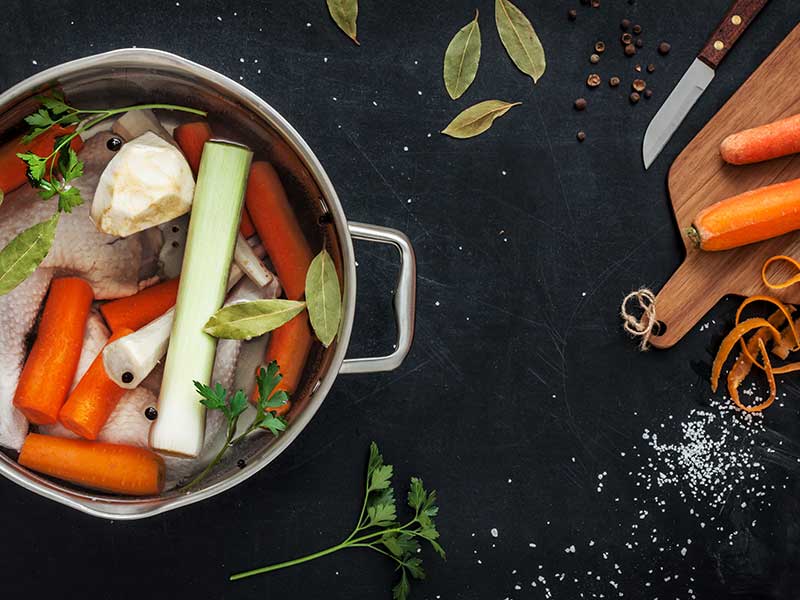
If you are not sure about the size of your stock pot at home or how much food it can handle, here is how to measure its volume.
If you have a mechanical scale, put the pot on the scale and tear the weight to zero. Then fill the pot with water. The amount of water is equal to the volume of the pot, which means 1 kilogram is equal to 1 liter.
You can use a water container with a volume indicator to measure the volume of your pot, but this method is not as concise as the above method.
Recommended Stock Pot Brands
All-Clad
All-Clad is one of the best cookware. If you like an 8-quart stainless steel stock pot of All-Clad, go for it! It features a wide base and tall sides to minimize evaporation, which is effective in liquid-related cooking.
The multi-layered construction of one aluminum core and 2 layers of stainless steel bonded together to maximize the durability and heat conduction. You can opt for a smaller 6-quart stainless steel stock pot.
Cook N Home
Cook and home is a more affordable brand with high-quality products. Check out this 12-quart stainless steel stock pot. It is made of mirror-polished stainless steel, durable, and easy to clean. The 8-quart size is also good if your cabinet is not big enough for bigger pots.
Le Creuset
Le Creuset is famous for its delicate-looking enameled pots. I recommend you get a 6-quart Enameled steel stock pot for your kitchen. Or you can get a 10-quart one if you frequently throw a home party.
These stock pots are superior in heat distribution. They are extremely durable because they are made from heavy-gauge carbon steel.
Cuisinart
Cuisinart is among the most loved cookware suppliers today. This Cuisinart’s 6-quart stainless steel stock pot with a high-impact bonded base ensures durability and good heat conduction.
Tramontina
Another popular brand for you to choose from is Tramontina. You won’t have to worry about sudden family gatherings anymore if you have a 12-quart Tramontina stainless steel stock pot or an 8-quart one in your kitchen.
FAQs
You have gone through the crash course about stock pots, but there is much more to it than you can ever imagine. Here are some FAQs to know more about your beloved kitchenware:
Have You Made Up Your Mind About The Stock Pot?
If you are still reluctant to decide the size of the stock pot you want to get. I have some suggestions for you.
If you have a lot of space and your budget allows it, buy a combo that consists of small, medium, and large stock pots. That way, you will never have to regret choosing the wrong size.
If your budget and storage space is humble, go for a 6-8-quart stock pot. That’s the average size that can deal with a decent amount of meals without taking up too much space. Make sure you comment and share this article for more great content!
Reference
- Stock pot (2022) Wikipedia. Wikimedia Foundation.
- Cookbook: stock pot (no date) Wikibooks, open books for an open world.


